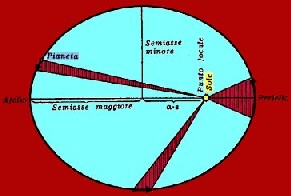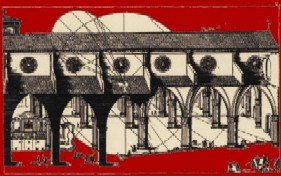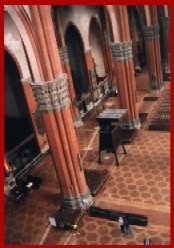Gian Domenico Cassini (continued)
| Fig. 1:
San
Petronius church with the sun rays passing from the vault to Cassini's
sundial line. (Credit: Biblioteca del Dipartimento di Astronomia di Bologna) |
Cassini is justly remembered for the sundial line he traced on the floor of the Basilica of San Petronius, Bologna, in 1655. It is the longest sundial line in the world: 66.8 metres, equal exactly to 1/600,000 of the earth's circumference.
With this instrument – which he called a "heliometer" – Cassini intended to establish the length of the solar year by measuring the time between two successive passages of the Sun at the spring equinox, in order to verify the accuracy of the Gregorian reform of the calendar.
But above all he wanted to solve the
controversy between the followers of Aristotle and Ptolemy on the one hand, who
believed that the Sun moved in a circular and uniform way around the static
Earth, and the followers of Copernicus and Galilei on the other hand, who
believed that the Earth moved constantly around the Sun and that the Sun's
motion was, therefore, only apparent.
| Fig. 2: The
sundial line passing among the columns of San Petronius church. (Credit: Foto di Fabrizio Bónoli) |
In actual fact, the Sun seems to move in the sky more slowly in summer than in winter, and it is in summer that it is furthest from the Earth. It was this greater distance that, according to the ancient scholars, made it seem to move more slowly.
However, Kepler's 2nd Law (mathematically proven only at the end of the 1600s by Newton) states that "the Earth moves more quickly when it is nearer the Sun and moves more slowly when it is further away". More precisely, it states that the line which joins the planet with the Sun sweeps equal areas in equal times (Fig. 3).
 |
Fig. 3: Kepler's 2nd Law describing the motion of a planet around. |
Using his "heliometer", Cassini noted that during the course of the year the diameter of the Sun (and therefore its distance) did not decrease in the same way that its speed decreased; this meant that the decrease in speed was not apparent, but real. This was the first observed confirmation in the world of Kepler's 2nd Law.
|
|


